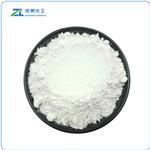
Sodium sulfite
- Product NameSodium sulfite
- CAS7757-83-7
- CBNumberCB4111698
-
MFNa2O3S
Lewis structure
- MW126.04
- EINECS231-821-4
- MDL NumberMFCD00003503
- MOL File7757-83-7.mol
- MSDS FileSDS
Chemical Properties
| Melting point | 500 °C |
| bulk density | 1480kg/m3 |
| Density | 2.63 |
| refractive index | 1,484 |
| storage temp. | Store at +5°C to +30°C. |
| solubility | H2O: 1 M at 20 °C, clear, colorless |
| form | Solid |
| Specific Gravity | 2.633 |
| color | White to slightly yellow |
| PH | 9.0-10.5 (25℃, 1M in H2O) |
| Odor | Odorless |
| PH Range | 9.0 - 10.5 at 126 g/l at 25 °C |
| Water Solubility | 23 g/100 mL (20 ºC) |
| Sensitive | Hygroscopic |
| Merck | 14,8682 |
| Stability | Stable. Incompatible with strong acids. Moisture and air sensitive. |
| CAS DataBase Reference | 7757-83-7(CAS DataBase Reference) |
| FDA 21 CFR | 182.3798; 582.3798; 177.1200 |
Safety
| Symbol(GHS) |

|
|||||||||
| Hazard statements | H315-H319-H335 | |||||||||
| Precautionary statements | P233-P260-P261-P264-P271-P280-P302+P352-P304-P304+P340-P305+P351+P338-P312-P321-P332+P313-P337+P313-P340-P362-P403-P403+P233-P405-P501 | |||||||||
| Hazard Codes | Xn | |||||||||
| Risk Statements | 31-36/37/38-22-40-36/38 | |||||||||
| Safety Statements | 24/25-36-26-22 | |||||||||
| WGK Germany | 1 | |||||||||
| RTECS | WE2150000 | |||||||||
| F | 3-10 | |||||||||
| TSCA | Yes | |||||||||
| HS Code | 28321000 | |||||||||
| Hazardous Substances Data | 7757-83-7(Hazardous Substances Data) | |||||||||
| Toxicity | LD50 i.v. in mice: 175 mg/kg, Hoppe, Goble, J. Pharmacol. Exp. Ther. 101, 101 (1951) | |||||||||
| NFPA 704: |
|



